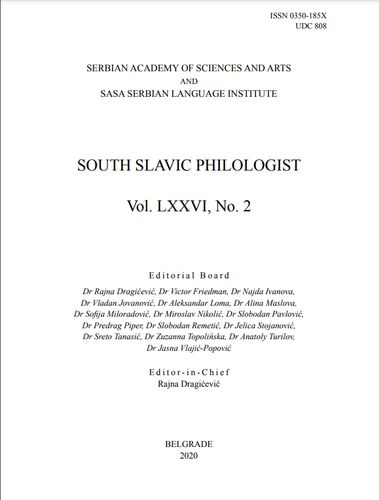ПІДХОДИ ДО ОПИСУ ІННОВАЦІЙ У СУЧАСНІЙ УКРАЇНСЬКІЙ НЕОГРАФІЇ
THE APPROACHES TO THE DESCRIPTION OF INNOVATIONS IN THE MODERN UKRAINIAN NEOGRAPHY
Author(s): Yevheniia Karpilovs’kaSubject(s): Lexis, Eastern Slavic Languages
Published by: Институт за српски језик Српске академије наука и уметности
Keywords: Ukrainian language; neology; neography; differential dictionary; integral dictionary; innovation; neolexeme
Summary/Abstract: The intensive development of the Ukrainian language at the turn of the 21st century due to its new status as the official language of independent Ukraine, the essential changes in Ukrainian society and Ukraine’s openness to globalisation have led to the forming of new disciplines in Ukrainian linguistics – neology and neography. They present two interconnected approaches to the analysis and lexicographic description of new language units (innovations) – the differential and the integral approach. The first approach involves the study of innovations in comparison with the existing units of the language, the search of criteria for determining their types by the features of their novelty in the language system and in text. The second approach focuses on the degree of stability of innovations in modern Ukrainian, i.e. the importance of concepts they verbalise in the conceptual and the linguistic worldview of the modern Ukrainians. The functional potential of a certain innovation in the linguistic activity of a society is an indicator of the degree of its stability in the language. It is a set of units consisting of innovation by paradigmatic, syntagmatic and epidigmatic (derivational) relations. The analysis of the word as the basic unit of Ukrainian nomination, prediction and evaluation enable the identification of other types of language innovations. The modern Ukrainian lexicon presents the following types of neologisms: new derivatives, new borrowings, neosemanticisms, neographisms, actualised and returned words. The application of the differential approach is advisable when gathering new language material, whereas the integrated approach is necessary when identifying the stabilised linguistic innovations, as it can be a resource for replenishing the general lexicon of a language. The results of the analysis of this new lexicon are presented in the differential and integral neological dictionaries.
Journal: Јужнословенски филолог
- Issue Year: 76/2020
- Issue No: 2
- Page Range: 105-125
- Page Count: 21
- Language: Ukrainian

